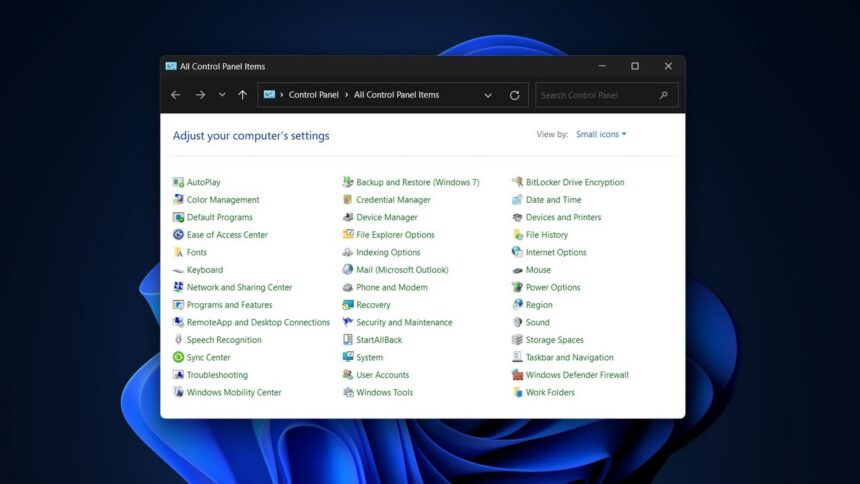For almost four decades, the Windows Control Panel has been a central feature in Microsoft’s operating systems. It has served as the go-to hub for users to manage various system settings, ranging from hardware configurations to network setups. However, Microsoft has officially announced the deprecation of this long-standing feature, signaling the end of an era.
What’s Happening & Why This Matters
The Control Panel’s phase-out has been in progress for some time, with its replacement, the Settings app, gradually taking over many of its functions. Introduced in Windows 8 in 2012, the Settings app was designed to offer a more modern and streamlined user experience, particularly for touchscreen devices. Over the years, with Windows 10 and Windows 11, this app has evolved to include almost all the functionalities previously available in the Control Panel.

Despite this ongoing transition, many users continued to rely on the Control Panel due to its familiarity and comprehensive control over system settings. The transition hasn’t been abrupt; instead, it’s been a slow migration, with individual applets being moved to the Settings app one by one. Some of these applets, such as the Displays panel and the Add/Remove Programs screen, have already been removed or integrated into the new interface.

Microsoft’s recent note on its support site, however, suggests that the remaining Control Panel applets may soon be removed entirely. This doesn’t mean that users will see these changes immediately, as even the upcoming Windows 24H2 update will still include the old Control Panel. But the gap between deprecation and removal could be narrowing, with Microsoft eventually eliminating this feature altogether in a future update.

The design of many Control Panel components is a throwback to much older versions of Windows, with some elements unchanged since the days of Windows NT 4.0 in 1996. The concept of the Control Panel itself dates back even further, to Windows 1.0 in 1985. These historical aspects have made the Control Panel a nostalgic piece of software for many users, even as newer elements of Windows continue to evolve and modernize.
TF Summary: What’s Next
As Microsoft continues to refine Windows, the Settings app is set to fully replace the Control Panel in upcoming updates, marking the end of this iconic feature. Users should prepare for the eventual disappearance of the Control Panel, with all system settings becoming accessible solely through the Settings app. This change reflects Microsoft’s ongoing efforts to modernize its operating systems while bidding farewell to a tool that has been integral to the Windows experience for nearly four decades. The future of Windows will likely be devoid of the Control Panel, but its legacy will remain a part of the operating system’s history.
— Text-to-Speech (TTS) provided by gspeech


